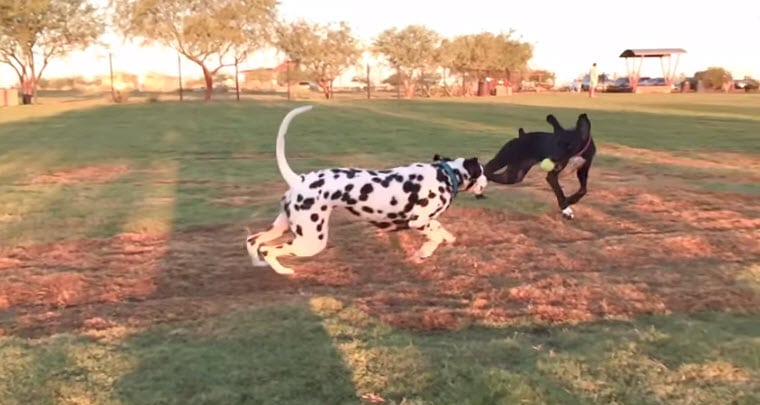Anxiety is an adaptive response to situations that threaten us. It happens to humans and other species like dogs, and we’ve had a couple of stories that prove it. When you think about your dog, you might think that it does not experience anxiety. But that’s not so.
Anxiety in dogs is more prevalent than most people think. Nearly three in four dogs express at least one type of anxiety behavior. Perhaps your dog experiences a mild form of anxiety; the symptoms often go unnoticed. But some dogs experience an all-out panic attack – an experience that could be detrimental both to the dog and the owner.
Whether mild or severe, if anxiety is left unchecked, it can lead to behavioral and other issues. Read on and learn what causes it and how to treat the condition.

What causes anxiety in dogs?
There are various causes of anxiety in dogs. They include:
- Environmental
- Genetic
- Separation
- Aging
Environmental
Issues like fewer socialization experiences and low-quality maternal care have a significant role in the development of anxiety in dogs. Studies show that low-quality maternal care often triggers the development of several anxiety-related disorders.
Puppies should not be separated from their mummies until they are about 8 to 10-weeks old. Not only do they receive the all-important maternal care, but they also learn crucial social skills from their littermates.
Genetic
Research shows that a dog could be susceptible to anxiety due to their genetic makeup. Breeds like Romagnolos (native to Italy) and Wheaten terriers are prone to noise sensitivity. Spanish water dogs, Border Collie and Shetland dogs are prone to panic attacks.
Dogs like the Miniature Schnauzers are often fearful and aggressive towards strangers. But, such traits are seldom (almost unheard of) among Labrador Retrievers.
Separation
Dogs with separation anxiety cannot keep calm when separated from their owners. They resort to undesirable behavior like toileting in non-designated areas, pacing, or relentless barking or howling. A dog will resort to unwanted behavior because of several factors like temperament and how it interacts with the owner.
Aging-related anxiety
It often occurs in senior dogs and could be related to loss of cognitive abilities. As your dog ages, it may develop conditions like Cognitive Dysfunction Syndrome (CDS) which causes declining memory, learning, perception, and awareness. The dog becomes anxious and fearful due to the reduced sensitivity.
Symptoms of anxiety in dogs
Now that you know some of the causes, the following symptoms will help tell if your dog has anxiety.
- Frequent aggressiveness.
- A house-trained dog toileting in the wrong places
- Excessive drooling, chewing items they are not supposed to and engaging in other destructive behaviors like scratching on doors.
- Excessive barking, pacing, and other restless behavior
There are many other symptoms of anxiety in dogs. If you suspect your dog has anxiety, consult a vet and have them examined.
Treatment for canine anxiety
A visit to the vet is your best bet at correctly diagnosing canine anxiety. The examination will also help reveal the root cause and treatment options. Vets can also help you rule out any medical condition.
Since many factors contribute to the development of canine anxiety, most vets recommend a combination of strategies for treatment. The popular strategies are training, prevention, and prescribing medication. Here’s more on these treatment strategies:
Training
Training entails teaching the dog new ways to respond to certain stimuli. The trainer helps the dog learn new ways to react to anxiety-triggering stimuli. Training could be counterconditioning or desensitization.
Counterconditioning entails teaching the dog to respond to the anxiety trigger more desirably.
Desensitization, as the name implies, entails helping the dog become less sensitive to the anxiety trigger. It often involves exposing the dog to small doses of the anxiety trigger while gradually increasing the intensity. The dog becomes less sensitive to it over time.

Prevention measures
These entail taking steps to prevent triggering anxious reactions or to increase the dog’s ability to cope with the anxiety trigger. They include measures like:
- Avoiding exposure to situations that would trigger reactions.
- Socialization helps a dog to learn to be around people and other pets. Trying out new activities with your pup will make them feel better.
- Exercising and dieting keep a dog’s mind (and muscles) stimulated to prevent separation anxiety. A stimulated dog is less likely to turn to destructive behavior.
Medications
In some cases, anxiety could be severe, and your dog might need medications to deal with it. Sometimes you want something to help your furry buddy deal with anxiety for a short period. A vet may prescribe antidepressants.
In other cases, you could opt for natural remedy products like pheromone-based sprays and oils or products like CBD. However, little research is available on natural remedies and their effect on dogs. The outcome may be unpredictable, and there could be possible side effects. Talk with a vet before using natural remedy products.
Anxiety in dogs: the bottom line
Canine anxiety is more prevalent than most dog owners would think. There are several causes, most of which are out of the hands of the owners. If left unchecked, it could lead to behavior problems. But you can learn how to identify anxiety in dogs. With the assistance of a vet and a dog behavior specialist, you can help your dog deal with the condition and thrive.
